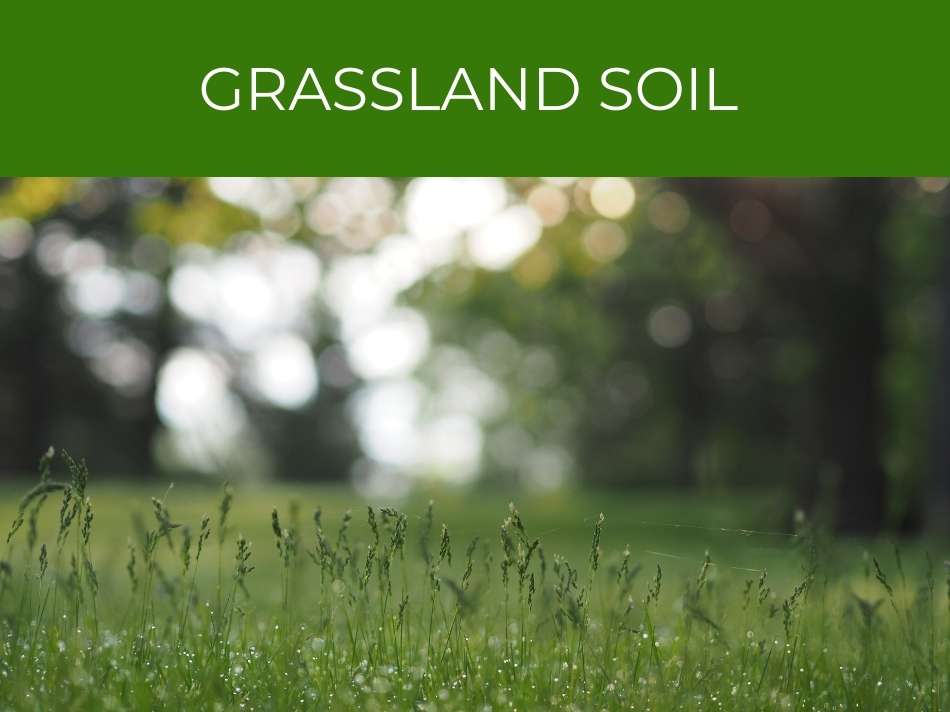Grasslands are found all over the world, apart from in Antarctica. Their climate supports the growth of grasses and wildflowers, but the erratic rainfall is not enough to support larger bushes and trees. But what’s grassland soil like?
Grassland soil, called “mollisol”, is highly fertile due to the high volume of organic matter that acts as mulch. Grasslands are characterized by erratic rainfall with periods of growth and die-back that grasses grow well in, but cannot support bushes or trees.
The soil in most grasslands is highly fertile, because of the high volume of grass leaves and roots that return to the soil as organic matter during periods of die-back. This can be seasonal or after wildfires.
The high soil fertility is part of the reason why grasslands are threatened, as humans convert it to farmland.
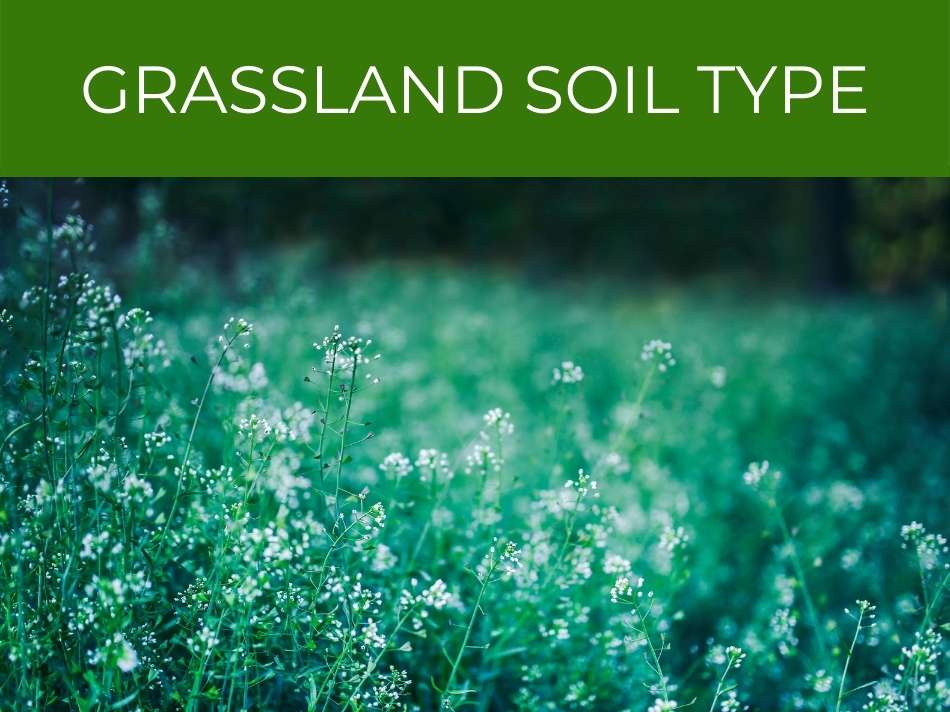
Grassland soil type
Grasslands are known as prairies in North America, savannas in Africa, and the pampas in Argentina.
The soil in grasslands is soft and highly fertile.
Grassland soil is known as ‘mollisol’, from the Latin meaning soft.
Grasslands are one of the largest biome types on earth. They are found in environments that encourage the growth of grasses, but not taller plants like trees and shrubs. The soil in grasslands has a relatively deep, highly fertile upper layer known as a ‘mollisol’, which is Latin for soft.
Grassland soil supports the quick growth of grasses and wildflowers during periods of rainfall.
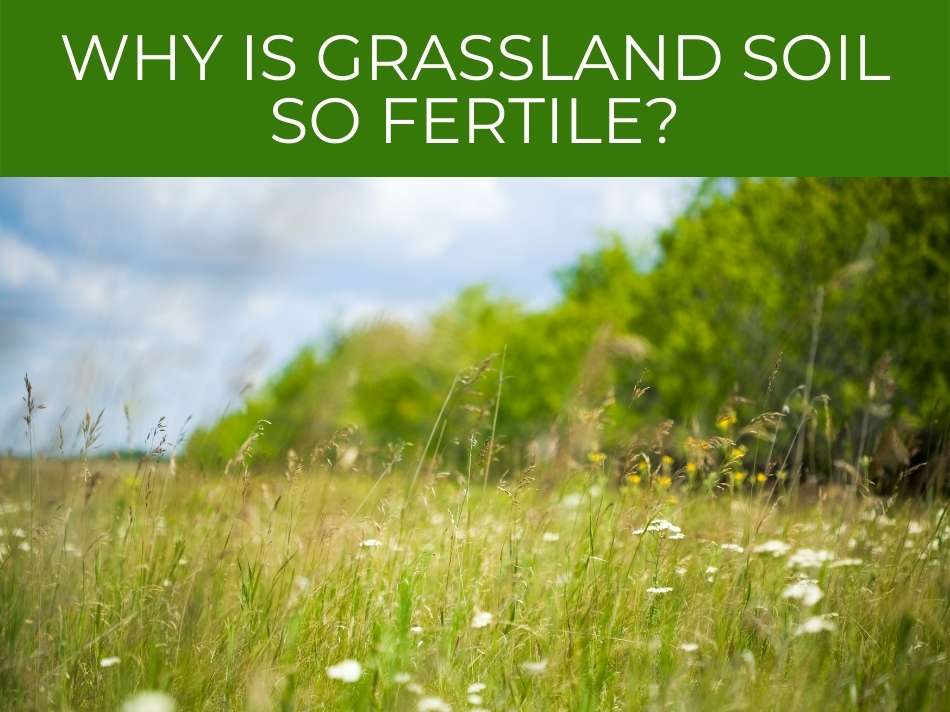
Why is grassland soil so fertile?
When grass dies back, a large volume of leaves and roots ‘mulch’ the soil.
This organic matter makes grassland soil highly fertile.
Grassland soil is highly fertile because of the high volume of organic matter that enriches it. Grasses grow rapidly in warm summer environments with high rainfall, but die back in the cold winters. The leaves & roots of the grasses mulch the soil & provide nutrients for the future growth.
Grassland soil can be so fertile that it appears black.
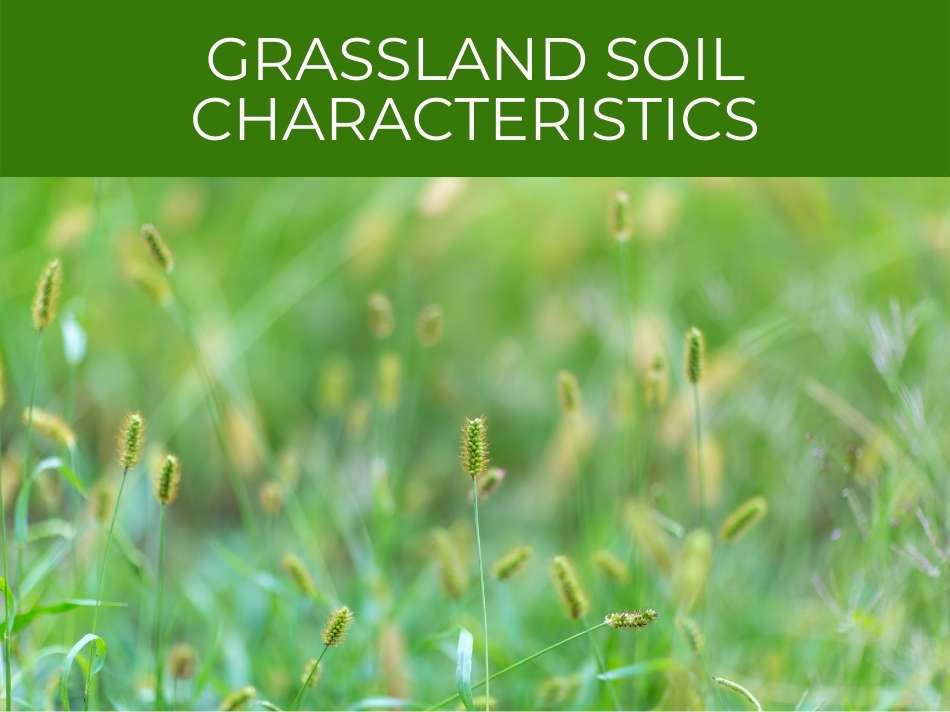
Grassland soil characteristics
The soil in grasslands is highly fertile, and soft and light.
The branched networks of grass roots, and the burrowing of insects and worms that live there, aerate the soil.
Grassland soils are high in organic matter, which gives it a dark, black color. The soil is also very soft and light, thanks to the extensive, branched networks of grass roots and the activity of burrowing earthworms and insects. Grassland soil holds water well but also drains easily.
The soil holds water well, but drains easily, characteristics which support grasses through periods of heavy rainfall and drought.
See what the soil type is in rainforests.
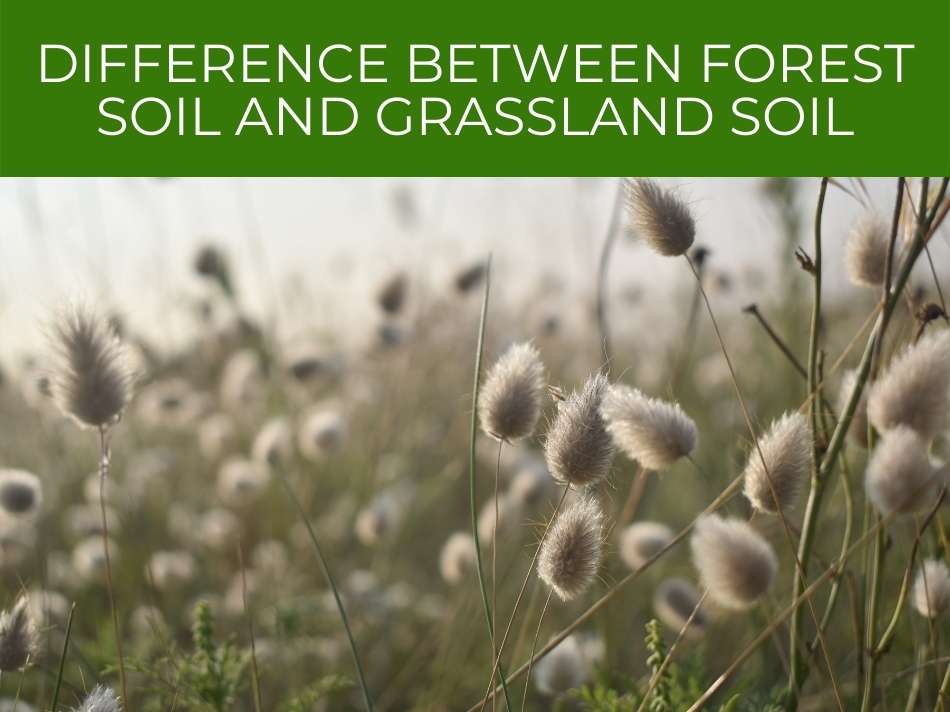
Difference between forest soil and grassland soil
Forest soil has less organic matter falling on it, and therefore has a thinner, top organic layer.
Leaf litter from forests is less nutrient rich than the organic matter from grasslands, and tends to have less nitrogen and carbon.
Forest soil has a thinner, top organic layer than grassland soil because there is less organic matter to enrich it. This top layer is also less nutrient rich in forests, with a lower nitrogen and carbon content. In forests with pine trees, the dropped needles also tend to make the soil more acidic.
In pine forests, slightly acidic pine needles make the soil more acidic than in grasslands.

Biotic factors in a grassland
The effects of living organisms on their environment are known as biotic factors.
Abiotic factors are the effects of non-living elements on an environment such as soil, geology, climate and weather.
Grasses are well suited to the grassland environment because they can grow quickly and recover from periods of drought or wildfire.
In grasslands, biotic factors include the types of plants that grow there, insects, invertebrates and microorganisms in the soil, and grazing and predatory animals. Biotic factors are the effects that a living organism has on the environment it lives in.
The organic material in grasses enriches the soil with organic matter when it dies back.
See this article on how to get your own compost started.
Insects, worms and microorganisms in the soil help break down the organic matter quickly, creating a fertile soil for the grass to regrow.
Grazing animals keep grasses low and eat the less productive parts of the plant.
Grazing animals also reduce competition from bushes and trees as they tend to be eaten or trampled before they can mature.
Predatory animals keep the population of the grazing animals in check.
All animals contribute to the fertilization of the soil, through manure and when they die.
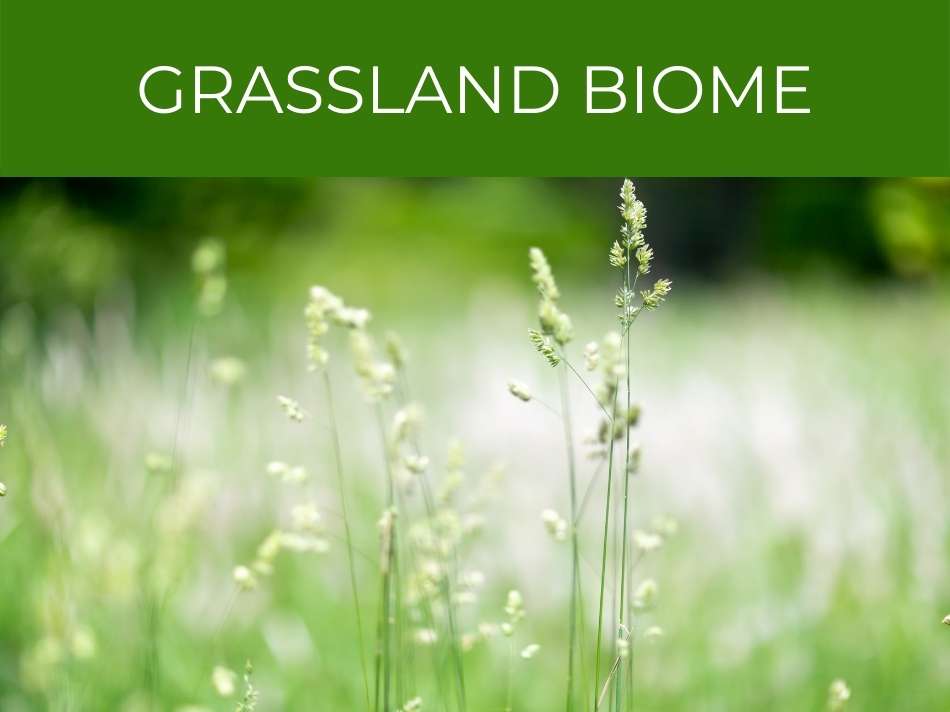
Grassland biome
Grasslands are large, flat biomes with erratic rainfall.
Grassland can either be temperate, or tropical, but both have seasons of growth and dormancy.
Grassland biomes are large, flat areas with erratic rainfall. They can be either temperate or tropical, but both undergo seasons of growth & dormancy. Temperate grasslands have warmer summers & cold winters. Tropical grasslands have more precipitation, but have a long dry season.
Wildfires in grasslands can also cause dieback and recycling of nutrients.
Temperate grasslands have warmer summers and cold winters, which is when grasses die back.
Tropical grasslands, such as the African savannahs, have more rainfall but have long dry seasons.
Tropical grasslands also experience wildfires which lead to dieback.
Grasslands in some ways are similar to deserts.

Grassland plants list
Grasslands are found on almost every continent, and the plants that can be found on them vary with region.
All grasslands feature types of grass, with shorter varieties found in temperate areas.
Plants found in temperate grasslands include short grasses & wildflowers. For example, needlegrass, buffalo grass, galleta, blue grama, sagebrush, asters, clover, and sunflowers. Tropical grasslands feature plants such as bermuda grass, elephant grass, fescue, feather grass, and lemongrass.
Temperate grasslands also have wildflowers, such as:
- Black-eyed Susan
- Coneflowers
- Bergamot
- Milkweeds
North American grasslands also include grasses like:
- Big bluestem
- Wild rye
- Side-oats grama grass
- Indiangrass
The higher rainfall in tropical grasslands can support a few, small trees or bushes.
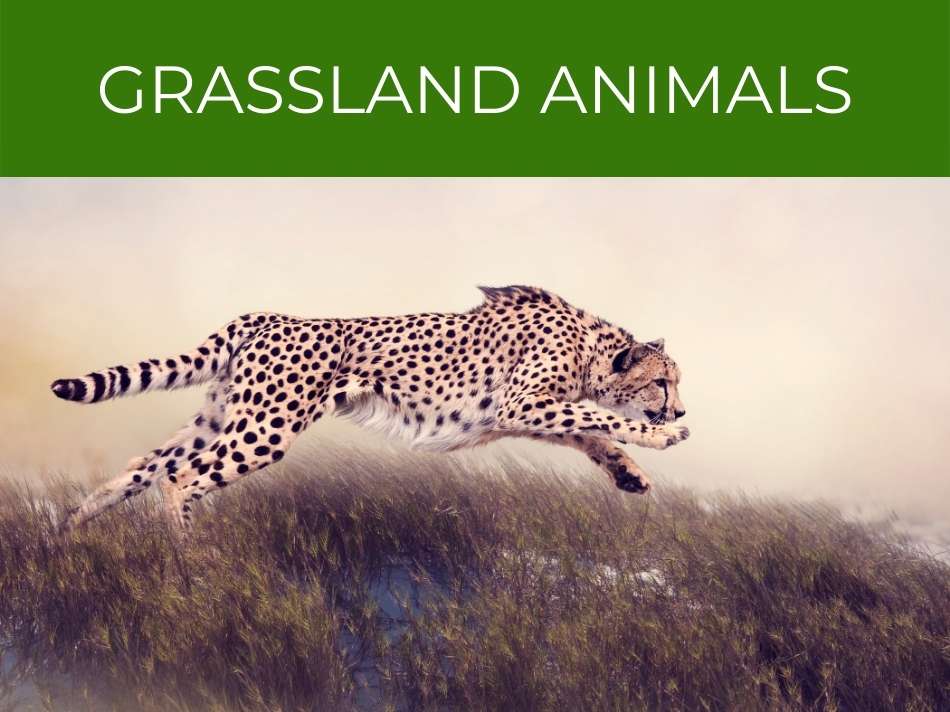
Grassland animals
Grasslands support grazing animals, small birds and mammals that live in grass, and their predators.
The specific types of animals found in grasslands depends on the region.
Grasslands are found on all continents apart from Antarctica, & support a range of animals. Depending on the region, this includes grazing animals such as antelope, kangaroos and bison, predatory animals such as cheetahs, wolves and eagles, & small birds & mammals like prairie dogs & mice.
In North American prairies, grassland animals include bison, elk, pronghorn antelope, coyotes, prairie dogs, foxes, wolves and owls.
In Australian grasslands, animals include kangaroos, wallabies, dingos, emu and wombats.
In the pampas of Argentina, you can find guanaco, the pampas fox, rheas, colocolos, cavy and pumas.
Tropical savannas support elephants, lions, wildebeest, zebra, hyenas, vultures, rhinos and antelopes.
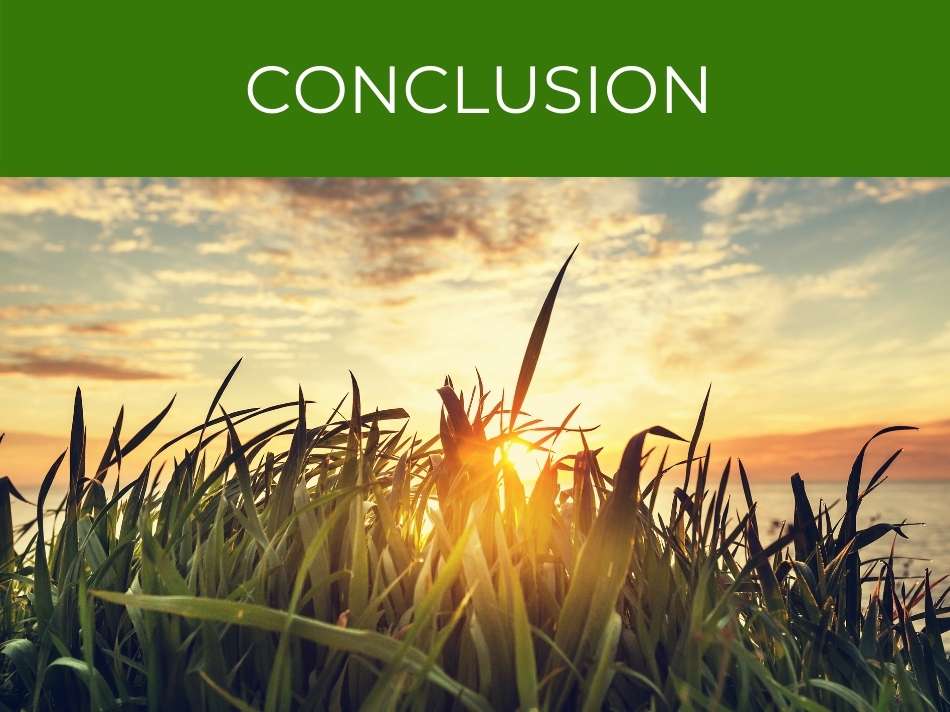
Conclusion
Grasslands are a distinct biome, found in almost every region on earth.
They include the savannas of Africa, the prairies of North America and the pampas of South America, and support a wide range of animal life in each region.
Their fertile soil makes grasslands good for agriculture, however, which has heavily impacted their survival, and the animals that rely on them.

